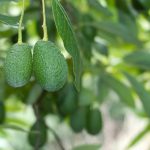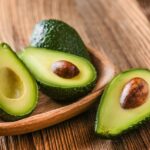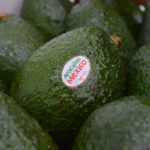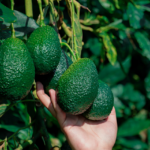Challenges for Mexico to remain at the helm of the avocado market

As part of the program for the 8th Jalisco Avocado Congress, the president of GLC Cerritos, Giovanni Cavaletto, offered a presentation on the role of Jalisco in making Mexico a more complete supplier for the U.S. market.
The director of the avocado producer and exporter, who has been working in the avocado industry for more than 25 years, is a founding member of some of the most important avocado associations worldwide, such as the Hass Avocado Board (HAB) and the Colombian Avocado Board (CAB).
Cavaletto explained that since 1997, after a 70-year embargo by U.S. authorities on Mexican avocados, the industry has gone through a very successful period, making the Aztec country the leading producer and exporter of avocados in the world.
“In these years the volume of avocado consumption in the United States has increased tenfold, from 135,000 tons per year to a market of 1,350,000,000 tons per year,” Cavaletto said.
“In 1997, if Mexico sent more than 30 or 40 trucks per week, the market would collapse. Today we are sending 900 trucks per week and the avocado sells for $50 per box,” the director added.
He assured, however, that there is still plenty of room for growth for Mexico, and that since 2015, annual growth has stagnated at 5%, due to the large volume of new hectares that would have to be approved to grow at a higher rate.
Today, the global avocado market is valued at US$12 billion and 76% of global production is in Latin America.
Jalisco's boost
Jalisco's opening to export avocados to the United States helped Mexico's volume increase to 19% in 2023 for the first time in many years.
However, for Cavaletto this is only a “bandaid, as we will have more challenges in the future that we will have to overcome if we want demand and supply to grow.”
Today, Jalisco has 10% of the avocado hectares approved for export to the United States, however, its importance becomes greater during Michoacán's transitional off-season. In mid-August, it accounted for 45% of Mexico's avocado volume to the U.S. market.
In addition, Michoacán has somewhat reached its limit of exportable acres, making Jalisco's role a more important one.
“In Jalisco, we have technified orchards, so the fruit can be larger, the productivity per acre can be larger than an orchard from the 1980s that depends only on rain. In addition, we have production during the low season in Mexico, which helps the country not to lose shelves to other origins,” said Cavaletto.
Competition in the industry
Caveletto warned that in recent years, the American market has added many new origins, and that “surely in the coming years there will be more competition.”
For example, Peru, which gained access in 2012, has grown at an annual rate of 29%.
“In its harvest period, which is more or less 15 weeks, Peru can export 1,500 containers per week, which is more than Mexico during its peak period,” Cavaletto said.
Colombia, which gained access in 2016 and already has 35,000 hectares, is growing at a rate of 200% annually and could become a threat in 5-10 years if they continue to increase their acreage.
He added that the next countries that could gain access to the United States are Ecuador and Guatemala, which have just over 8,000 hectares, but also have the potential to grow rapidly.
Where will growth come from in the future?
Cavaletto told attendees that before 2015, there was a perception that Mexico was the inexhaustible source of avocados and that when the U.S. market needed it, it could always look south to get it.
“It feels like we've hit a ceiling with the strategy of adding new acreage in Michoacán,” Caveletto said. “We could also add new Mexican states, however, it took Jalisco 25 years to gain access, which shows it's not easy.”
In addition, the producing states that follow Jalisco have less than half of the hectares in production already approved for Jalisco, therefore, “this is also not an immediate answer to add more volume to the market.”
Cavaletto suggested that growth that favors the Mexican economy will come from increasing productivity per acre of the trees already planted.
He indicated that large supermarket chains in the United States are looking to diversify their avocado supply and not depend on just one country for their avocados.
“Peru and Colombia have an advantage and that is that they offer price stability, as they can guarantee their supply for 2-3 months,” Cavaletto said.
Advantages for Mexico
Mexico's first obvious advantage is its proximity to the United States, which allows it to react very quickly to market changes and requirements.
“Not all countries have that luxury, from Chile or Peru it can take three weeks for the fruit to arrive, a time in which the market can change a lot, but you cannot send more or less, the fruit is going to arrive when it is going to arrive,” said Cavaletto.
Additionally, Mexican avocados are the avocado of choice for the U.S. market, and Cavaletto indicated that “there can be a difference of up to $30 per box for a Mexican avocado versus a Peruvian avocado.”
“In addition, Avocados From Mexico has a budget of $70 million annually to promote the fruit in the United States, which has helped consolidate the Mexican product as the market favorite, no other country has that amount of investment in marketing the fruit” the director added.
Challenges
To maintain the productive and export advantage, the Cerritos director assured that they must improve production efficiency, per unit of land, fertilizer, water, and labor.
“There is no more water, no more labor, no more fertilizer, so we have to learn how to produce more with what we already have. We also have to anticipate climate changes that are already happening. We have to anticipate more competition, whether it is from Peru, Colombia, or California because everyone is going to fight for their space,” said Cavaletto.
He indicated that it is important to maintain genetic diversity to face all these challenges. There are new varieties that are more resistant to pests, with stronger and more prepared genetics.
“We have also heard about the problem of deforestation, which is happening all over the world and if we lose the wild avocado forests, we are going to lose the genetic secrets of these fruits, so it is important as an industry to invest in a world-class collection of germplasm,” Cavaletto said.
He added that if they can cover Mexico's low season with more volume between March and August, they could add $400 million to the Mexican economy.
“If we can increase productivity per hectare by 10%, it could be $250 million to the Mexican economy and if we can add 60 grams to each avocado, it could have an effect of $100 million.”
Therefore, he said it is worth doing studies and a SWOT analysis of the industry to recognize ways to be more efficient and sustainable.
“We have to keep pushing ourselves to be better,” Cavaletti said, ”and we can't be arrogant for the sake of being dominant, as we have to focus on being the best today and for the future, for our children, grandchildren and great-grandchildren.”
Related article: 8th Jalisco Avocado Congress: Learning in order to grow
The Global Avocado Summit organized by the Chilean Avocado Committee and Yentzen Group will be held on November 21 at the Casino Monticello event center.















































